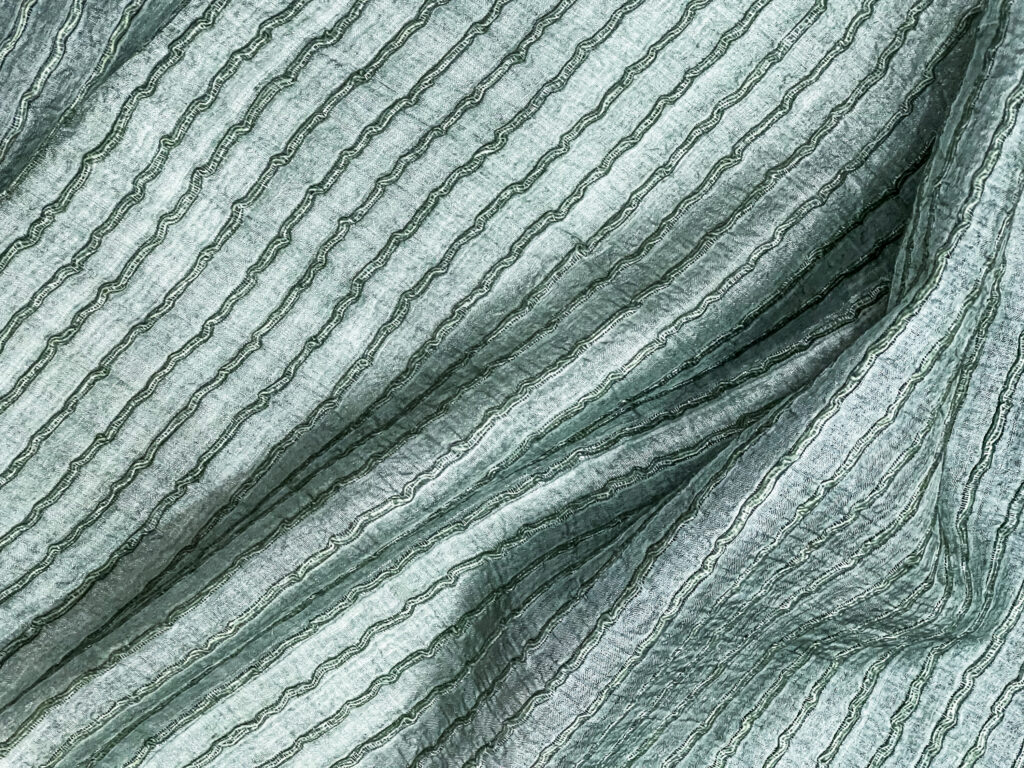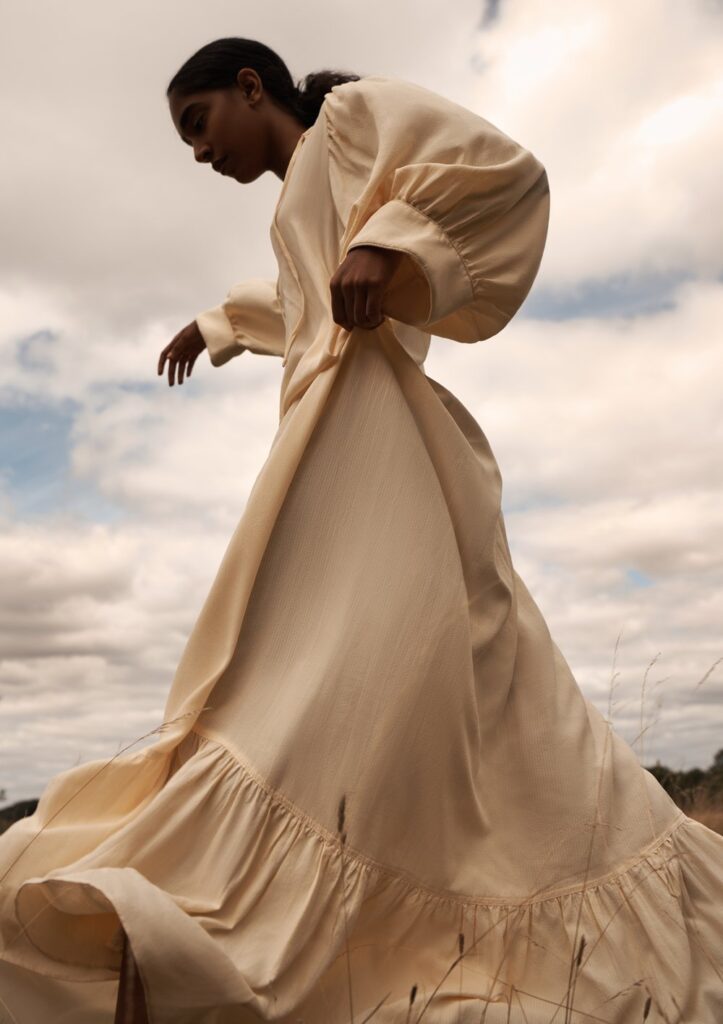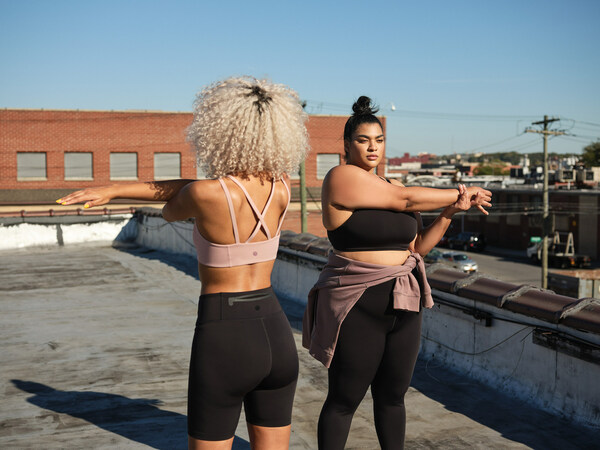
From delicate dresses and scarves, blouses, and shirts to fresh pajamas, silk is a comfortable and soft fabric for all kinds of garments.
With features such as softness, shine, light touch, as well as, hypoallergenic properties, and high resistance, this fabric has become one of the favorites.
Silk is also a prized luxury fiber, yet it has a social, ethical, and ecological impact. That’s why I’ll give you some tips to have this beautiful fabric in your wardrobe more sustainably.
Let’s see, first of all, where does silk come from?
Textile silk originated in China more than 4,500 years ago. Sericulture became so widespread that it became the article that generated the most commerce. That is why the “silk route” was inaugurated, which went from eastern China to the Mediterranean Sea.
Silk then arrived in Europe and America, where there were various advances in the production of this fabric.
Now, let’s go back to the environmental, ethical, and social challenges this fabric implies:
You should know that in traditional silk production, silkworms are killed to prevent them from hatching and breaking the silk. Sericulture is also energy and water-intensive, and its processing chemicals can adversely affect the health of silk reelers and farmers as well as negatively impact the environment. Bonded and child labor has been an issue in some production countries, and despite its luxury status, farmers can still receive low incomes.
And what is bonded labor? Also called debt slavery, it occurs when people are forced to work to pay off a debt. Unfortunately, people who experience bonded labor have often been deceived into working for little or no pay. In many cases, they are forced to pay high rates for accommodation and food. There is also no control over the ‘debt’ they have accumulated. Most of their income goes to pay off their ‘loan’.
Like many forms of modern slavery, bonded labor thrives where corruption, poverty, and discrimination are common. Limited access to justice, education, and work for discriminated groups makes it difficult for them to escape poverty.
That’s why we’ll take a quick look at sustainable silk alternatives, from organic silk to innovative plant-based substitutes, as well as some key suppliers and brands (that also work ethically and fairly) to help if you’re a silk lover.
Organic Silk
Organic silk focuses on silkworm food, being grown consistently with organic farming without using harmful chemicals, also reducing water pollution in its processing. which is its main advantage. However, the cocooning process is the same as standard silk so it is not cruelty-free. But one of my favorite parts here is that organic silk suppliers support better farming practices and safer chemistry usage.

Peace/ahimsa silk
This option is cruelty-free as it allows silkworms to become moths. They can fly freely and pollinate plants, protecting biodiversity. Peace silk can also be made according to organic standards. This silk has a more matte or shiny finish depending on the worm´s feeding. But, not made to the same volume as standard silk, it comes at a higher cost.
Companies like Cocccon Crafts & Loom source organic peace silk and create fair employment in rural India for its farmers, spinners, and weavers.

Recycled silk
This sustainable alternative reclaims factory waste and recycles it into valuable new fibers, plus avoids additional harvesting of silkworms. Some notable providers are Mantero and Gentrue, who go beyond fashion by applying therapeutic and skin care ingredients to sports bras and cycling leggings. I highly recommend you take a walk through their website!
I personally believe in the vision of these brands, who only sell by order according to demand, without overproducing and additionally innovating, eliminating toxic substances in their products, because hey! Especially in sportswear! We want to stay healthy! Our clothes should be too.
Plant and food-based silk alternatives
If you are pro-vegan and prefer fibers that don’t come from animals, you will like these options, which also contribute to the circular economy.
Lotus Silk:
- It's a smooth, silky, strong, breathable, and antibacterial fiber that blends well with other natural fibers.
- Chemical-free process.
- Spinners and weavers receive a fair income.
- It is labor-intensive to harvest, spin, and weave.
Orange Silk:
- Smooth and silky is made from cellulose by-products of citrus juice, which is fed into circular waste processes.
- Supplies of this fiber are still relatively limited.
If you’d like to know more about these silk alternatives check this post The Ultimate Sustainable Fiber Guide —For Fabrics—
Lyocell
Lyocell is smooth, soft, and can be silky looking. Unlike silk, which requires extra care in laundering, lyocell is easy to care for. These fibers are made in a closed-loop process, recycling water and organic solvent in spinning, so they are lower-impact. Just make sure when using man-made cellulosic fibers that they are FSC-certified, ensuring raw materials come from sustainably managed forests, using best practices for environmental and chemical management.

Certifications you can look for
Organic standards:
- Global Organic Textile Standard (GOTS) is a global textile processing standard for organic fiber (at least 70%), including social and ecological criteria; third-party certified.
- Organic Content Standard (OCS) guarantees material traceability in manufacturing.
Wildlife Friendly: Wildlife Friendly certification for wild silk ensures that the biodiversity of the forest is respected during the collection of wild silk cocoons.
Fair Trade:
- World Fair Trade Organization (WFTO) is a global community and verifier of enterprises that fully practice fair trade. It assesses the structure of a business, its operations, and supply chains.
- Fairtrade Textile Programme criteria includes tenets on living wage, health and safety, worker empowerment, and protection of workers and the environment from harmful chemicals.
Recycled silk:
- The Recycled Claim Standard (RCS) and Global Recycled Standard (GRS) set the criteria for third-party certification of recycled materials and chain of custody.
If you want to know a little more about the certifications, not only for silk but also for other fibers, take a look at this article about Ethical Fashion – What is it?

In conclusion…
We love silk for its delicate touch and softness, it is a naturally strong, thermoregulating, anti-inflammatory, and hypoallergenic fiber.
Raw, untreated natural silk is completely biodegradable after its useful life. It is a plus that we can also dye it with natural dyes and obtain an excellent result. With these silk alternatives, we reduce our carbon footprint and water consumption by participating in organic farming. And very important! We have cruelty-free alternatives.
I suggest you take care of the labels on your clothes and do some research before you buy them. Taking a few minutes to research and shop consciously can still make a big difference! Let’s go find kinder alternatives!




Leave a Reply